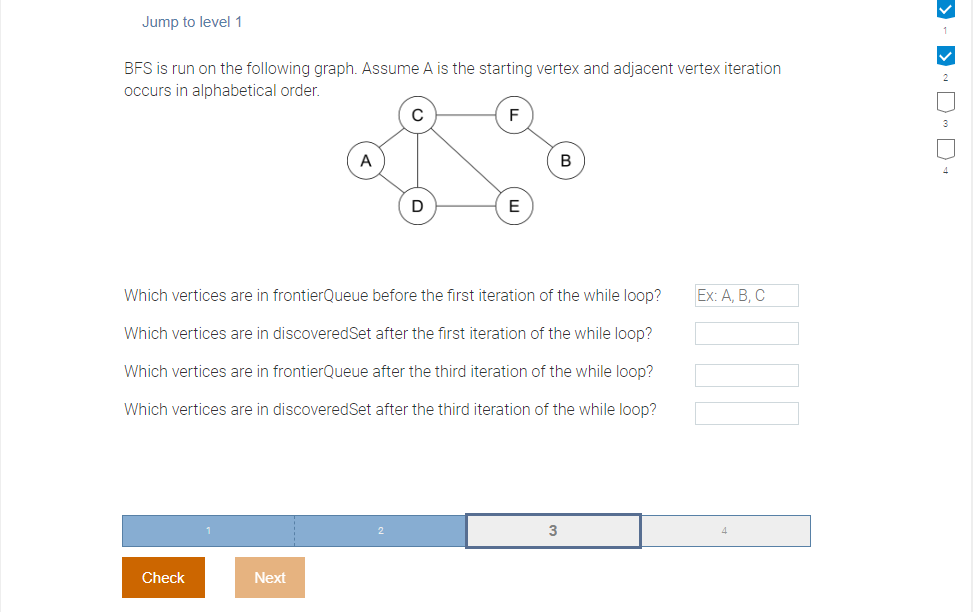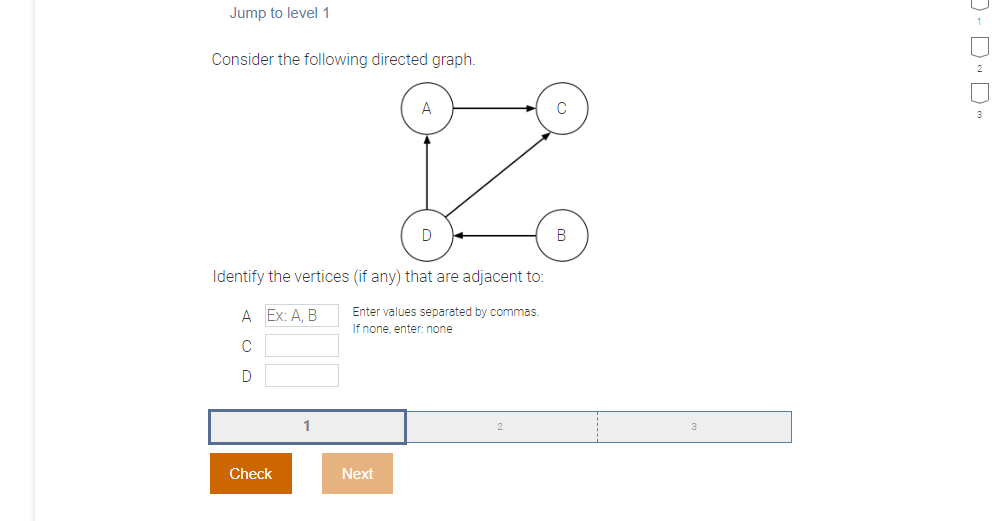Home /
Expert Answers /
Computer Science /
use-double-hashing-for-the-first-question-use-heap-sort-to-solve-the-second-question-solve-using-b-pa534
(Solved): Use Double Hashing for the first question Use heap sort to solve the second question Solve using b ...
Use Double Hashing for the first question
Use heap sort to solve the second question
Solve using breadth first search for the third question
Use directed graph knowledge to solve the fourth question
Empty-since-start Empty-after-removal Occupied Hash table valsTable uses double probing with the hash functions hash1(key): key \( \% 11 \) hash2(key): 5 - key \( \% 5 \) and a table size of \( 11 . \) What is the specific sequence of buckets probed by HashSearch(valsTable, 10)? (commas between values)
Jump to level 1 Given the array: Heapify into a max-heap.
BFS is run on the following graph. Assume A is the starting vertex and adjacent vertex iteration occurs in alphabetical order. Which vertices are in frontierQueue before the first iteration of the while loop? Which vertices are in discoveredSet after the first iteration of the while loop? Which vertices are in frontierQueue after the third iteration of the while loop? Which vertices are in discoveredSet after the third iteration of the while loop?
Consider the following directed graph. Identify the vertices (if any) that are adjacent to: A Enter values separated by commas. C If none, enter: none D
Expert Answer
The value to search is 13. Since it is Double Hashing, hash2(key) is added to the hash if a collision happens. Initially, apply the hash1 function to get the hash



